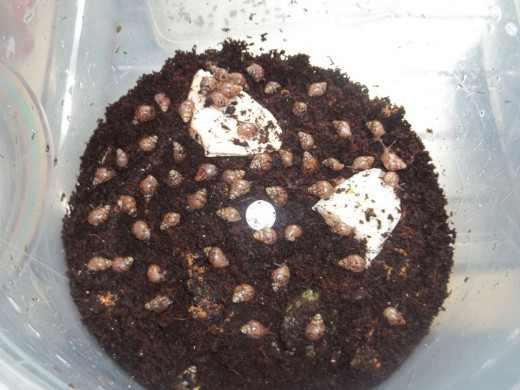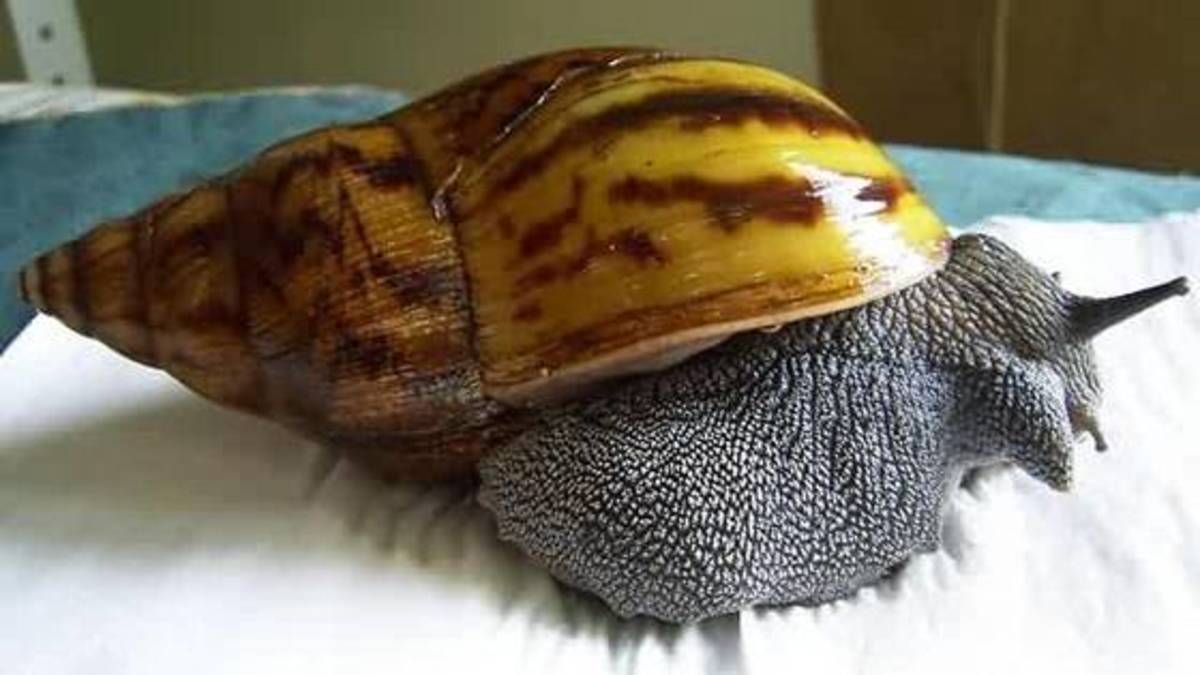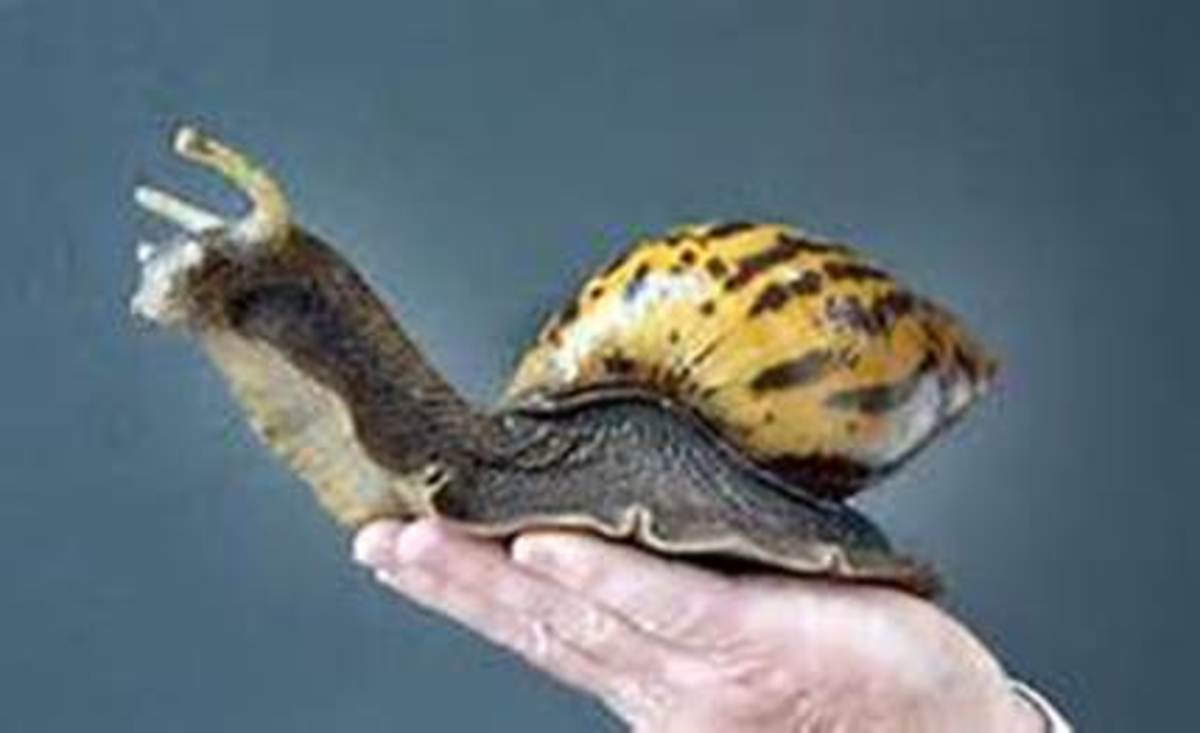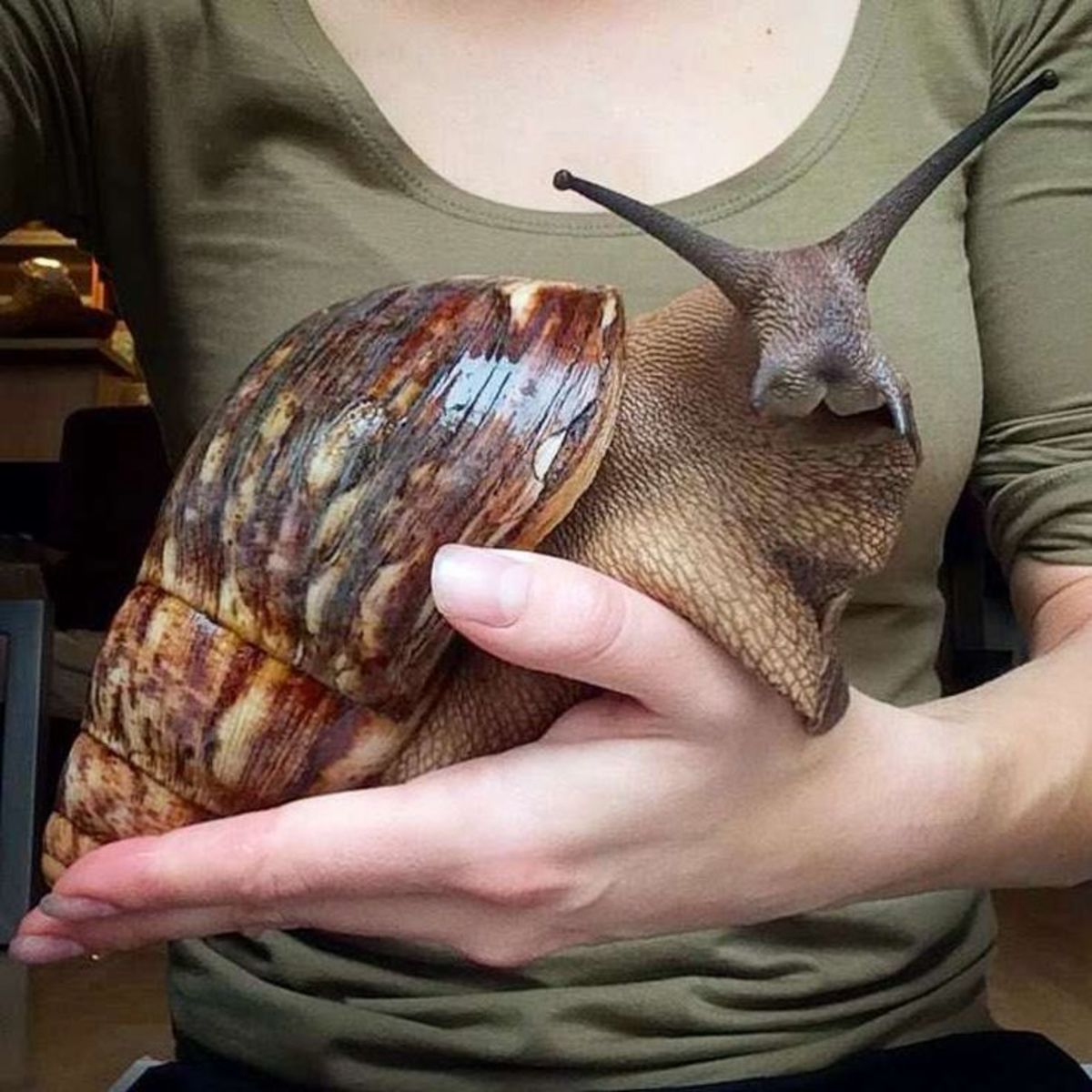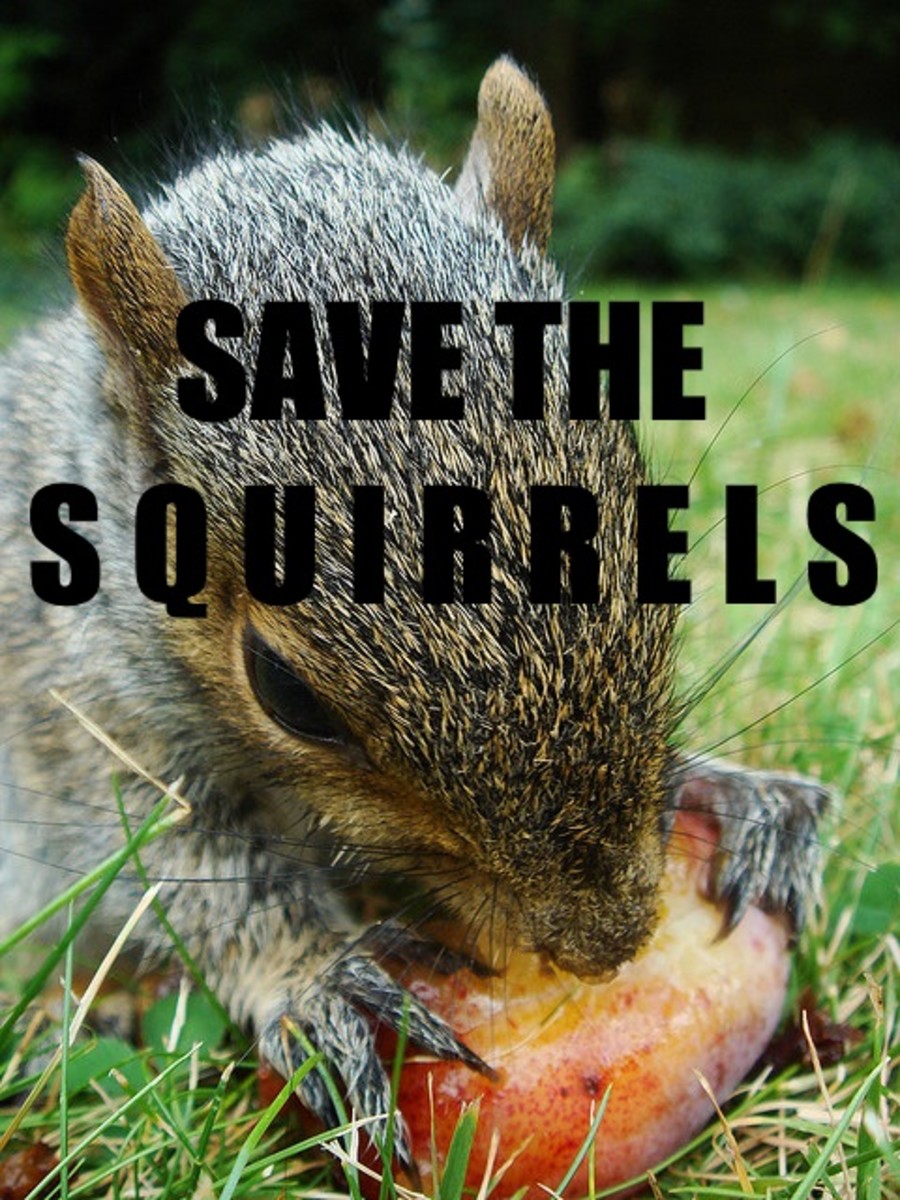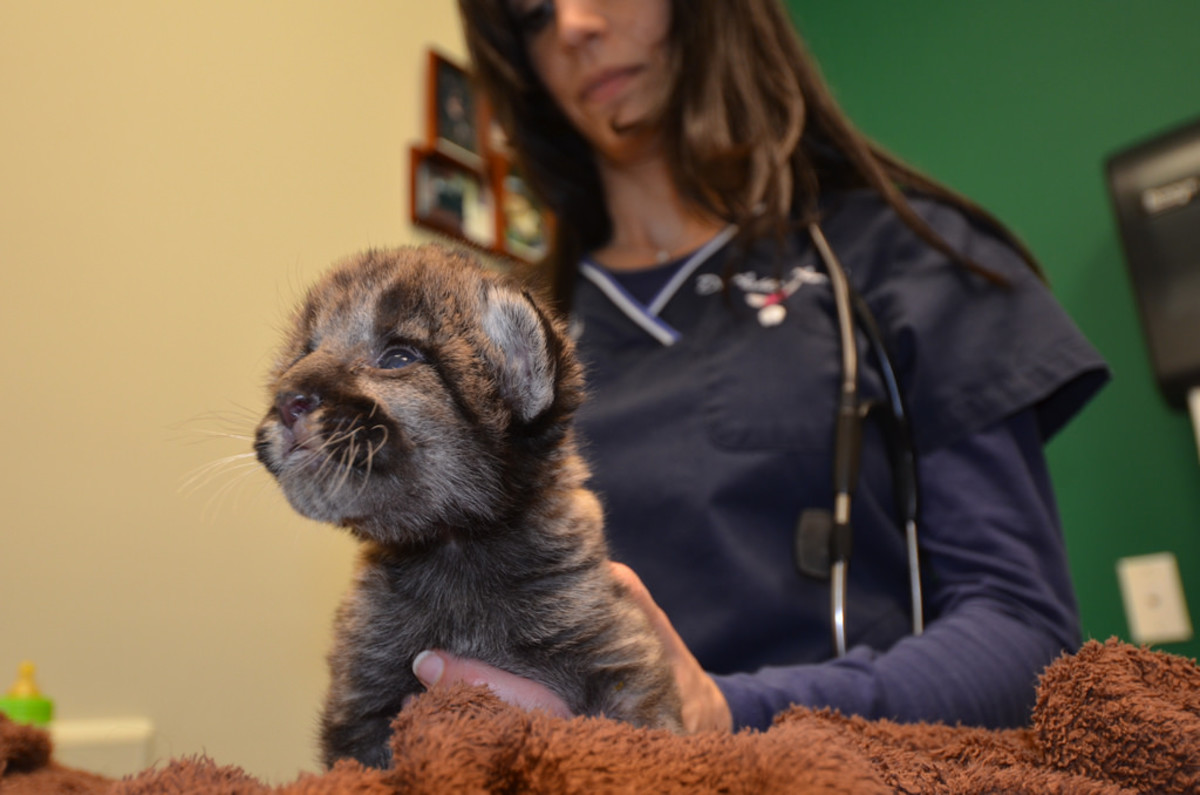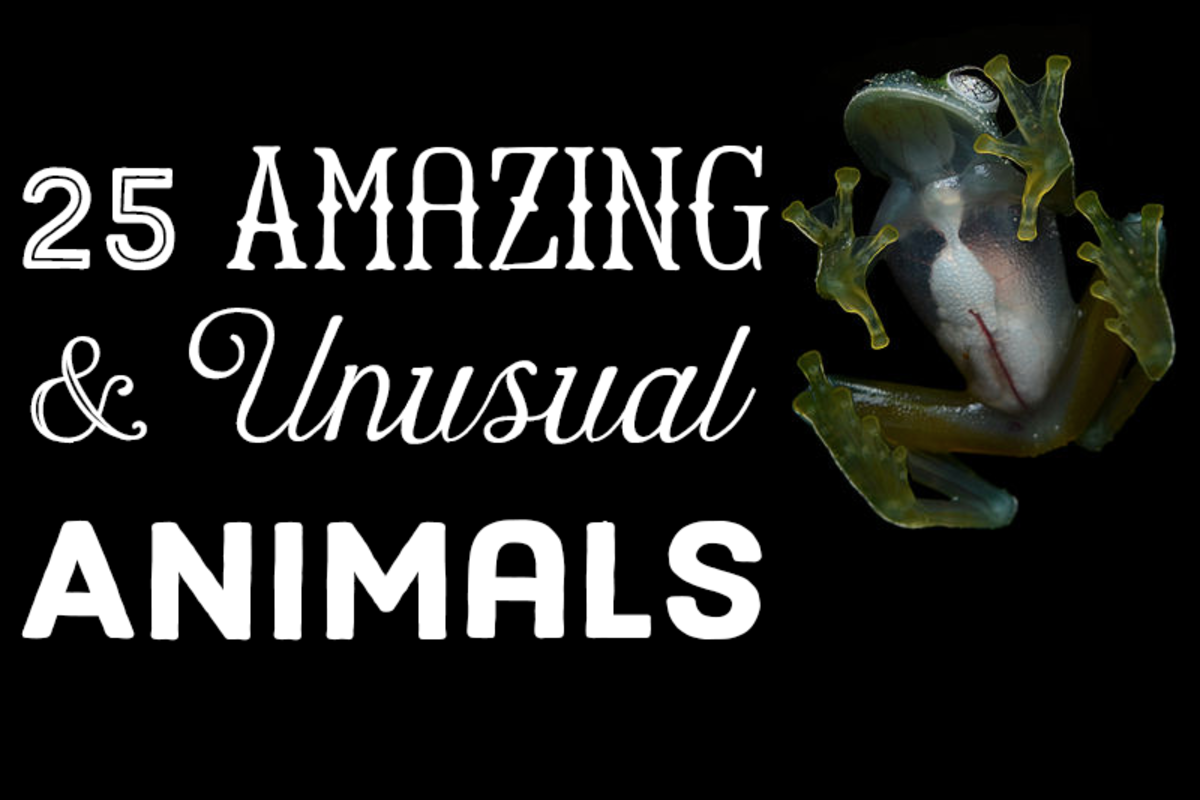How To Care For Pet Hermit Crabs and How To Care For Giant African Land Snails
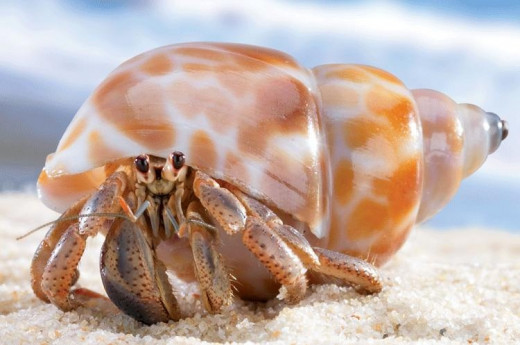
Giant African land snails and hermit crabs are becoming increasingly popular pets in the United States - there are plenty of reasons for this - they are so easy to keep, very low maintenance and do not require you to spend very much money on them. However, they are a pleasure to keep - being very active (especially hermit crabs), children adore them and they are so much fun to watch and play with. Hermit crabs, affectionately known as 'hermies' by many owners, do not have many requirements for their set-up. The few requirements they do have, however, are very important for them to be happy and healthy.
Vote For Your Favourite
Hermit Crabs Vs. Land Snails
Glass Aquariums (With Lids) Are Perfect
Hermit Crab Care
Firstly, although the name 'hermit' crab suggests they are creatures who like to live on their own, this couldn't be further from the truth. Hermit crabs love the company of others, and being kept individually can cause a huge amount of stress on them, which can lead to death. A pair or small group is the best way to keep your crabs and you will hear them clicking to one another (this is how they communicate), at night-time and through the day.
The best set-up for hermies is a large tank or reptile vivarium as these are designed to hold in the humidity in the tank while allowing some fresh air to circulate. The tank should have at least a 10-20 gallon capacity for 2-3 crabs. You will need a humidity gauge (known as a hygrometer), to ensure your hermit crabs are being kept at a consistent humidity of between 75-85% and a thermometer to make sure the temperature is between 75-85 degrees Fahrenheit.
Hermit crabs are tropical creatures and correct temperature and humidity are vital for their survival - if too low or too high, the hermit crabs will exhibit lethargic and slow behaviour, and may eventually lose limbs and die from suffocation as the correct humidity are vital to allow them to breathe. Two inexpensive and easy tips for maintaining the correct humidity include placing a heat-mat underneath the tank, which will help heat rise through the substrate and prevent heat loss, and placing reptile moss (never Spanish or decorative moss), in the tank, which the hermit crabs will love to snack on.
Natural moss helps maintain the humidity, and is very cheap to buy - but make sure it is bought from a reptile or pet shop as moss grown in nurseries can contain harmful chemicals etc... Setting up a new pet's home can be great fun - especially if you are doing so with children. Hermit crabs adore digging holes and caves in their substrate and they do this as a way to relieve stress and molt - so choosing the right substrate and putting the right amount of substrate in the tank is extremely important.
The single best substrate that you can buy is sugar-sized arrogate sand and it should be roughly 3-5 times deeper than the height of the largest hermit crab so they all have plenty of sand to dig around in. Never use gravel of any kind or calcium sand as they can cut the hermit crabs, which can lead to infection. Cleaning out the tank is incredibly easy - a thorough clean only needs to be done once every six months (less if you notice ants have moved in or there is mold growing), and it is advised that you spot-clean daily, removing excrement and excess food (which the crabs will bury). You can sterilise sand by baking it in the oven at 250 degrees Fahrenheit for 2 hours.
Extra shells and dishes can be cleaned by soaking them in boiling dechlorinated salt water once every 3 weeks. Many hermit crab owners use clam shells as food dishes as they are exceptionally easy to clean, and look good too.
To keep your crabs happy, you will need to provide them with plenty of things to climb - natural rocks, Choya logs and small wooden stumps are perfect for this, but ensure they are not too close to the top of the tank as your hermit crabs will escape. Living or plastic plants are great, as the hermit crabs will climb them, hide in them and eat them (if they begin eating plastic plants you need to remove them as soon as possible to prevent any harm being done). Spider plants are ideal living plants as they are totally safe for the hermit crabs to snack on.
Coconut shells make fantastic hiding places for hermit crabs, as they are natural and provide a dark, quiet place for the hermit crab to tuck away in. Never use painted toys or hide-away places as the paint can chip off and be fatal if eaten. You will need to include two bowls of water in your hermit crabs 'crabitat' - one fresh water (never use tap water, unless you use a water conditioner that is capable of removing the chlorine), and the other salt water - which your crabs may wish to submerge themselves in. Make sure you include some rocks so that your hermies can climb out to reduce the risk of drowning.
As they grow, your hermit crabs will need to shed their exoskeletons. When they are ready to do this, they may bury themselves for several weeks. Don't disturb them during this time - unless you notice a strong, fishy smell the crab is absolutely fine and trying to dig them out would cause a great deal of damage. Once they have shed their exoskeleton - the hermit crabs will consume their old one so they do not miss out on vital minerals and vitamins that will help their new exoskeleton harden, so never remove it before they have had the chance to do this.
By nature, hermit crabs are scavengers and in the wild they will spend their time eating whatever they come across. Therefore, whatever you give them will be picked up and nibbled on - so it is up to you to exercise common sense when feeding your crabs. Never give them foods high in salt or sugar or foods that are spicy as all of these foods will be very harmful. There are so many foods your hermit crabs will love, including freeze-dried krill or shrimp, fresh fish heads - these will provide your hermit crabs with hours of entertainment and they will love picking away at the flesh. You can usually pick them up free from a fish market. Raw meat, plain grilled meat, plain popcorn, eggshells, hard-boiled eggs, whole wheat toast, coconut chunks and natural peanut butter are also great treats. Try to feed them something different every day, to imitate their natural feeding habits.
Never handle your hermit crabs within 3 days of getting them home - they require this time to settle into their new habitat, as hermit crabs are taken from the wild. This means that they can die from Post Purchase Stress if not left to settle for long enough - even with the best efforts of the most experienced keepers this sometimes happens. When they have become more active and no longer retreat inside their shells when you approach the tank you can try hand feeding, which will gain their trust (though this takes time and patience it is well worth the effort in the end).
When handling, remember that it is best to keep them out of their enclosure for only short periods of time so that they can get back to the proper humidity and temperature. Hermit crabs are naturally afraid of falling as even a small fall can be fatal, and this can sometimes mean they pinch you (though usually they will let go straight away). Allowing them to climb up your clothing is a great way of exercising them while having the contact that all pet owners crave.
Live Moss Is A Wonderful Addition
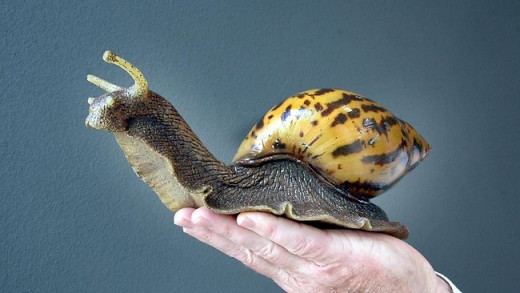
Giant African Land Snail Care
Giant African land snails are, in many ways, very similar to Hermit crabs in what they require for a suitable habitat. A 10 gallon glass fish tank with a lid is ideal for a pair of land snails and a thermometer and hygrometer are needed. Land snails require a constant temperature of 77 degrees Fahrenheit and the humidity in the tank should be 60-70% Less than this can cause illness, lethargy and even death. The best way to maintain humidity is to mist the tank once a day with warm water, and to place the tank on top of a heat mat, as you would for hermit crabs.
A relatively thick layer of substrate is needed - about 3-4 inches. Never use compost or soil that you have collected yourself as these can contain fertilisers, bacteria and chemicals that may cause irreversible damage or even death.You can use organic compost, spagnum moss or capillary matting as substrate - or even a mixture.
Land snails love to climb, so they will really appreciate rocks and logs - which double as decoration. Choose a wide, shallow water bowl for the tank. It should have no more than a few millimetres of dechlorinated water in it at a time, as drowning is a risk if the water is deeper than this.
Land snails require a very simple diet - fresh, leafy greens such as cabbage, lettuce and spinach should be provided daily, but they also enjoy tomatoes, cucumber and cuttlefish bone which is a great source of calcium for them. (Calcium plays an important role in maintaining a healthy shell). All land snails are hermaphrodites - meaning they are both male and female. Therefore, you'll probably find small holes dug in the substrate filled with lots of tiny eggs.
If you do not intend to hatch them, you need to freeze them for 48 hours before disposing of them - simply disposing of the eggs is actually illegal as land snails breed and reproduce so quickly. One female can lay up to 300 eggs over the course of several years after a single mating! When handling your snails, ensure your hands are damp, clean and free of any chemicals (even soap can be harmful). Pick the snail up gently by the shell (avoid doing this if the snail is stuck firmly on glass as pulling them can cause a lot of damage), and allow it to crawl up your arm. Never handle them for longer than 30 minutes at a time, as they will need to get back to the correct humidity.
When handling your snail, you should check for any white patches on the skin and any shell damage as these two things could be a cause for concern, though generally land snails are hardy when kept in the right conditions and it is pretty rare for them to develop an illness or condition. Cleaning out is very simple. All you need to do is rinse and wipe the bottom and sides of the tank with warm water after throwing away the old substrate. Don't use any chemicals, as even after being rinsed off, the land snails are extremely susceptible to chemical damage. This should be done once a week, and uneaten food should be removed from the tank at the end of each day to prevent it rotting.
Baby Land Snails
